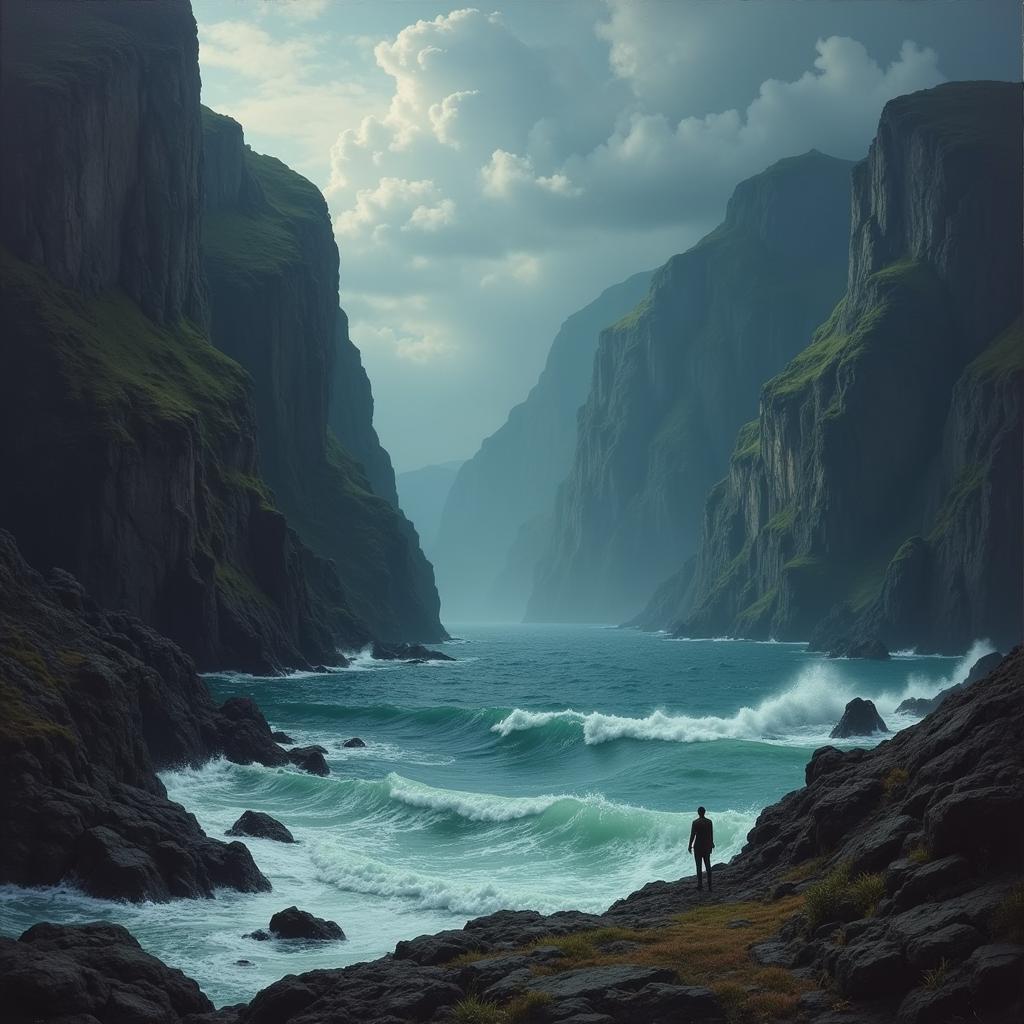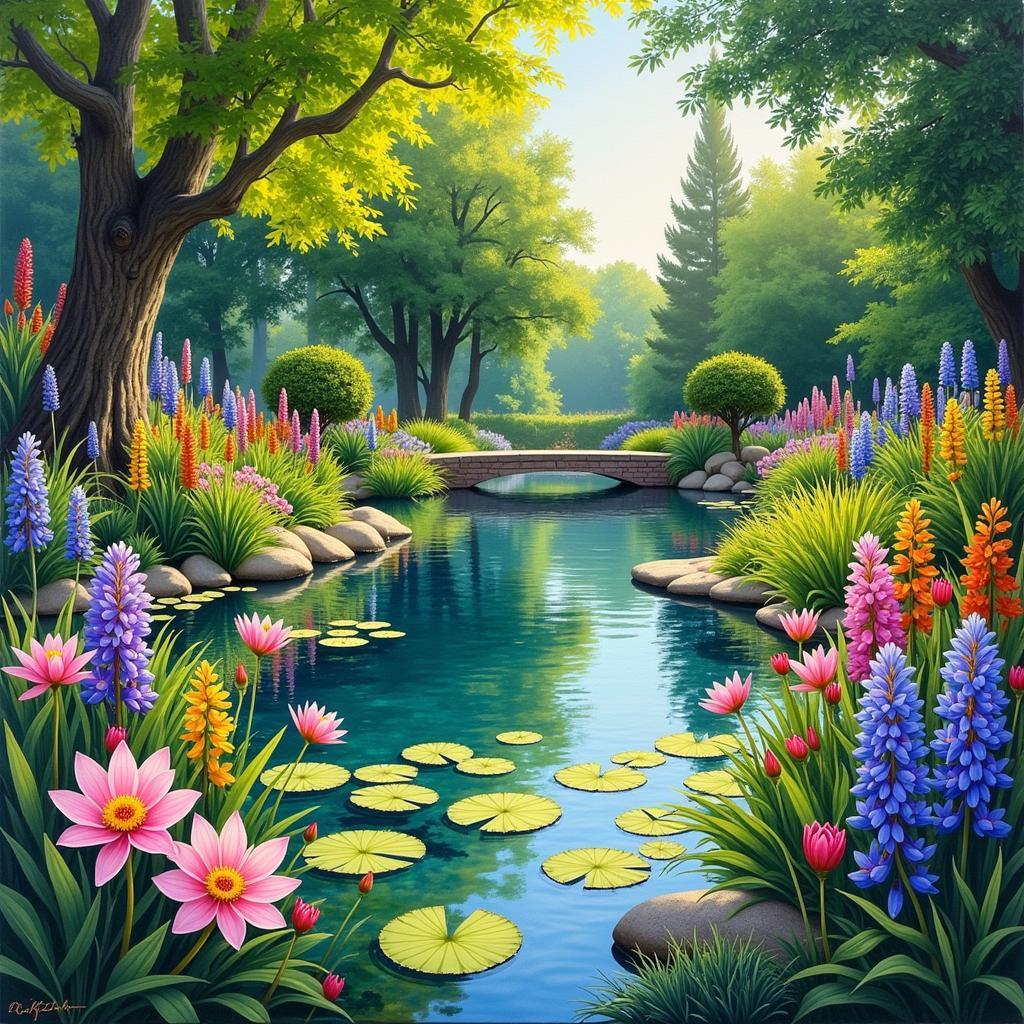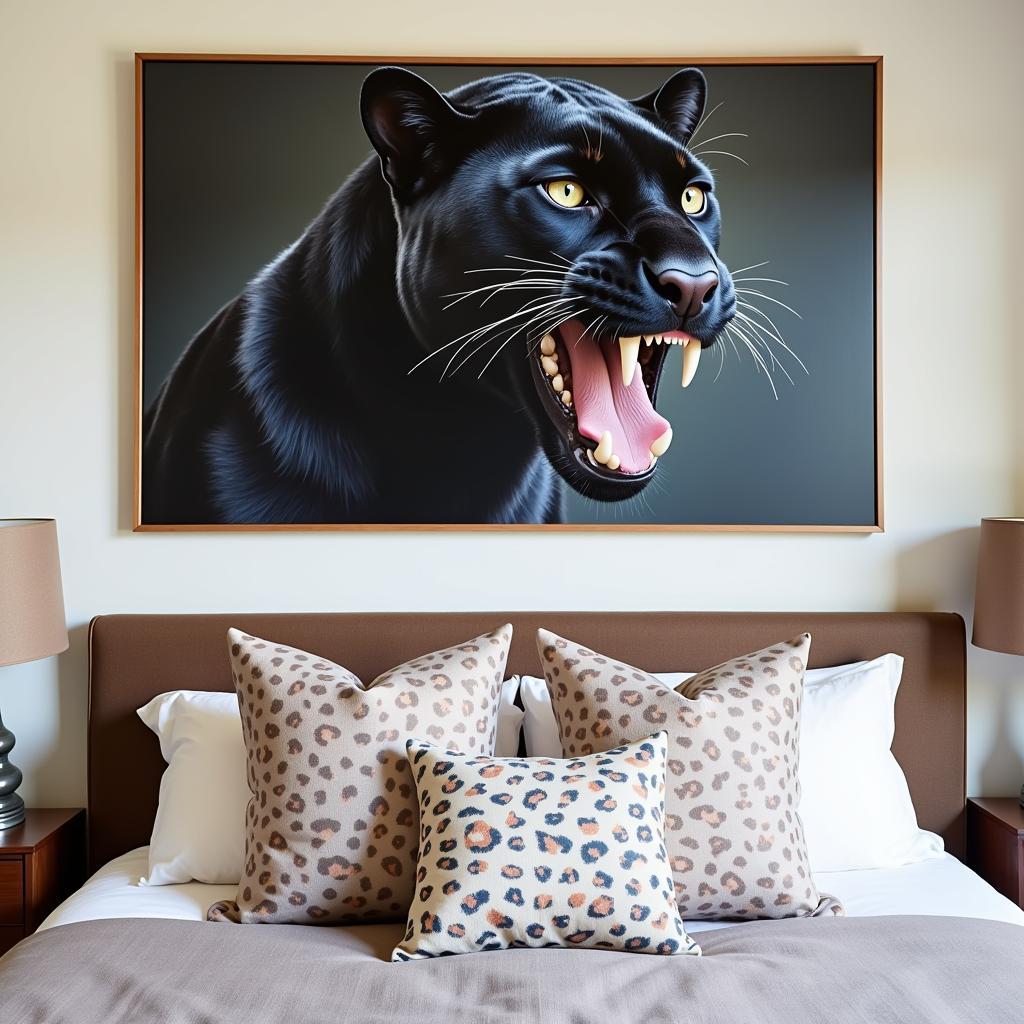Exploring the Timeless Beauty of Traditional Landscape Art
Traditional Landscape Art, a genre steeped in history and rich with evocative imagery, continues to captivate audiences worldwide. From the sweeping vistas of Romantic painters to the delicate brushstrokes of Eastern ink wash landscapes, this art form offers a unique window into the natural world and our relationship with it. This article delves into the core elements of traditional landscape art, exploring its evolution, techniques, and enduring appeal. See how artists have captured the essence of nature for centuries, and discover the magic that lies within these timeless depictions. You might even be inspired to create some abstract family art of your own after exploring these masterpieces.
A Journey Through Time: The Evolution of Traditional Landscape Art
Landscape painting emerged as a distinct genre relatively late in art history. While elements of landscape appeared in ancient art, it wasn’t until the Renaissance that it gained prominence. Early examples often served as backdrops for religious or mythological scenes, subtly hinting at the beauty of the natural world. However, with the rise of Romanticism in the 18th and 19th centuries, landscape art took center stage. Artists like Caspar David Friedrich infused their works with emotion and symbolism, portraying nature as a powerful and awe-inspiring force. This shift marked a turning point, elevating landscape painting to a genre capable of expressing profound human experiences.
 Caspar David Friedrich's Romantic Landscape Painting
Caspar David Friedrich's Romantic Landscape Painting
Key Elements of Traditional Landscape Art: Composition, Color, and Light
Several key elements define traditional landscape art. Composition, the arrangement of elements within the frame, plays a vital role in guiding the viewer’s eye and creating a sense of balance or dynamism. Color, whether vibrant and saturated or muted and subtle, sets the mood and atmosphere of the piece. Light, perhaps the most crucial element, dictates the overall tone and can be used to highlight specific areas, create depth, and evoke a range of emotions. These elements work in harmony to capture the essence of a particular place and time, transporting the viewer into the scene.
What makes traditional landscape art so captivating? Is it the technical mastery, the emotional resonance, or the connection to the natural world? Perhaps it’s a combination of all three.
Mastering Traditional Landscape Art Techniques
Traditional landscape artists employed a variety of techniques to achieve their desired effects. Oil painting, with its rich textures and vibrant colors, allowed for detailed rendering and subtle blending. Watercolor, known for its transparency and fluidity, captured the ephemeral qualities of light and atmosphere. Ink wash painting, a prominent technique in East Asian art, emphasized brushwork and spontaneity, creating evocative landscapes with minimal detail. By mastering these techniques, artists could transform their vision into tangible works of art.
Traditional Landscape Art vs. Contemporary Styles: Finding Nemo and Beyond
While traditional landscape art emphasizes realism and representation, contemporary approaches often explore abstraction and conceptual themes. Consider the concept art finding nemo. The vibrant underwater world, while rooted in natural forms, embraces a stylized and imaginative approach to depicting the environment. Similarly, contemporary star wars art often reimagines landscapes through a futuristic lens, blurring the lines between the real and the imagined. This evolution highlights the dynamic nature of art, continually adapting and reinventing itself in response to new ideas and technologies. Perhaps you’d like to explore live wall art as a contemporary expression of nature’s beauty.
The Enduring Appeal of Traditional Landscape Art
Despite the emergence of new art forms, traditional landscape art continues to resonate with audiences. Its ability to evoke a sense of peace, wonder, and connection to nature remains timeless. Whether it’s the dramatic vistas of the Romantic era or the tranquil scenes of Eastern landscapes, these works offer a glimpse into the beauty and complexity of the natural world, reminding us of our place within it.
 Impressionist Landscape Painting by Claude Monet
Impressionist Landscape Painting by Claude Monet
Conclusion
Traditional landscape art is a testament to humanity’s enduring fascination with the natural world. From its historical roots to its contemporary interpretations, this genre continues to inspire and captivate. By understanding its evolution, techniques, and enduring appeal, we can gain a deeper appreciation for the artistry and beauty that lies within these timeless depictions of nature. Consider exploring the works of Art Cummins for a contemporary perspective on landscape art.
FAQ
- What is the difference between a landscape and a seascape?
- What are some famous traditional landscape artists?
- How can I learn to paint traditional landscapes?
- What materials are needed for traditional landscape painting?
- Where can I see examples of traditional landscape art?
- What are the different styles of traditional landscape art?
- How do I choose the right frame for a traditional landscape painting?
For further assistance, please contact us at Phone Number: 02462573573, Email: danteum@gmail.com Or visit us at: Savico Megamall, 7-9 Đ. Nguyễn Văn Linh, Gia Thụy, Long Biên, Hà Nội 10000, Việt Nam. We have a 24/7 customer support team.

